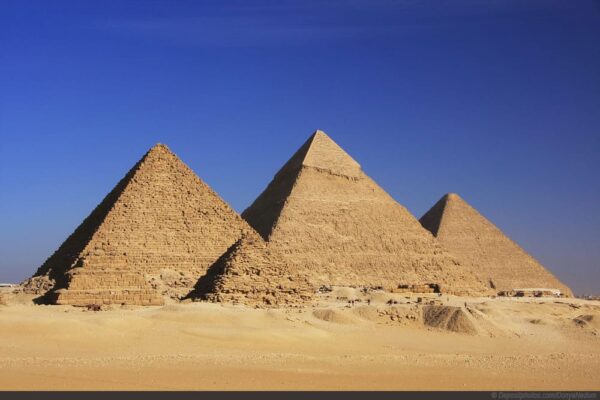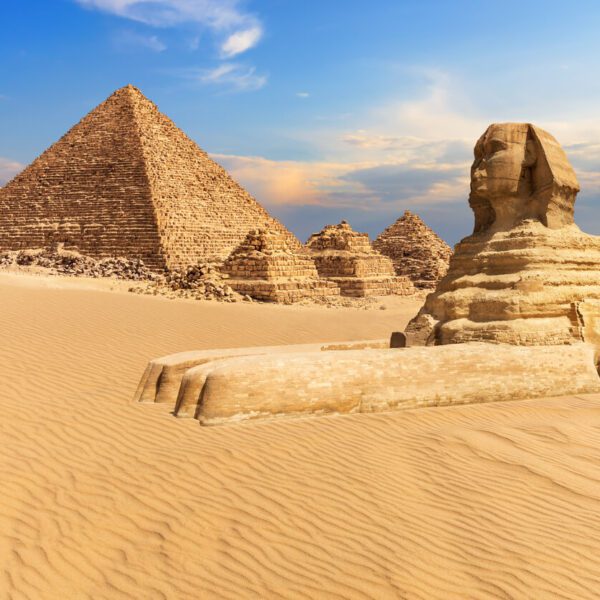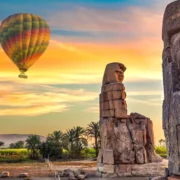

Fascinating Facts on the Pyramids of Giza
Fascinating Facts on the Pyramids of Giza: A Marvel of Ancient Engineering
The pyramids of Giza, rising majestically against the vast Egyptian desert, are among the most famous and mysterious structures ever built by man.
These ancient monuments have captured the imagination of millions who marvel at their immense size and the incredible feats of engineering required to create them. Let’s delve into some
lesser-known facts about the Pyramids of Giza that might surprise you.
How Many Pyramids of Giza Are There?
When people talk about the pyramids of Giza, they usually refer to the three main pyramids: the Great Pyramid of Giza (also known as the Pyramid of Khufu), the Pyramid of Khafre, and the Pyramid of Menkaure. These three pyramids were constructed as tombs for the pharaohs and are part of a larger complex that also includes smaller pyramids, temples, and other structures.
Each of the three main pyramids was built to house the remains of a different pharaoh and to honor his journey to the afterlife. The largest and most famous of them all is the Great Pyramid of Giza.
How Big Is the Great Pyramid of Giza?
The Great Pyramid of Giza is a colossal structure that never fails to impress visitors with its sheer size. With an original height of 146.6 meters (481 feet), it was the tallest man-made structure in the world for over 3,800 years. Due to erosion and the loss of the outer casing stones, the pyramid now stands at 138.8 meters (455 feet).
The base of the pyramid covers an area of about 13 acres, and each side of the base measures approximately 230.4 meters (756 feet). It is estimated that the pyramid is composed of around 2.3 million stone blocks, each weighing an average of 2.5 tons, although some blocks weigh up to 15 tons.
The total mass of the pyramid is estimated to be around 5.75 million tons, making it one of the heaviest structures ever built by man. also The immense size and weight of the Great Pyramid make it a true wonder of the ancient world.
The Great Pyramid of Giza Has 8 Sides
One of the lesser-known facts about the Great Pyramid of Giza is that it actually has eight sides, not four as it appears from a distance. This unique feature is subtle and can only be observed from the air under specific lighting conditions, such as during the equinoxes at sunrise and sunset.
The sides of the pyramid are slightly concave, meaning that each of the four sides is split into two, giving the pyramid a total of eight sides. This architectural feature is so precise that it is barely visible to the naked eye and is a testament to the incredible craftsmanship of the ancient Egyptians.
How High Is the Great Pyramid of Giza?
As mentioned earlier, the original height of the Great Pyramid of Giza was 146.6 meters (481 feet), making it the tallest structure in the world for almost four millennia. Today, due to the loss of the outer casing stones and natural erosion, the pyramid stands at 138.8 meters (455 feet).
Despite this reduction, the Great Pyramid remains an awe-inspiring sight, dominating the Giza Plateau and offering an insight into the architectural prowess of ancient Egypt.
How Was the Great Pyramid of Giza Built?
The construction of the Great Pyramid of Giza is one of the most debated topics among historians, archaeologists, and engineers. How could such a massive structure be built without modern machinery? The truth is, we still don’t have all the answers, but several theories have been proposed.
One of the most widely accepted theories is that the pyramid was built using a combination of ramps and levers. It is believed that the ancient Egyptians used straight, zigzag, or circular ramps to transport the massive stone blocks to the construction site. Once there, they likely used levers to position the stones into place.
Another theory suggests that the pyramid was built from the inside out, using a spiraling ramp that was dismantled after the pyramid was completed. Regardless of the method, building the pyramid would have required a highly organized workforce, advanced knowledge of mathematics and engineering, and a tremendous amount of manual labor.
It is estimated that the construction of the Great Pyramid took around 20 years to complete. During this period, the workers would have had to place a stone block every two minutes on average while working continuously. It’s an overwhelming notion, but the fact that the pyramid still stands today is a testament to the ingenuity and determination of the ancient Egyptians.
How Long Did It Take to Build the Pyramid of Giza?
As mentioned earlier, it is estimated that the construction of the Great Pyramid of Giza took around 20 years. This timeline is based on historical records and estimates of the size of the labor force and the methods used to move and place the massive stone blocks.
The ancient Greek historian Herodotus, who visited Egypt around 450 BCE, claimed that the pyramid was built by 100,000 laborers. However, more recent archaeological finds suggest that a smaller, more specialized workforce of around 20,000 to 30,000 workers may have been responsible for its construction.
These workers were not slaves, as was commonly assumed in the past, but skilled laborers who were well-fed and cared for. Evidence of worker villages near the pyramids suggests that these workers lived in relatively comfortable conditions, with access to food, water, and medical care.
Why Were the Pyramids Built?
The pyramids were built as tombs for the pharaohs who, as divine rulers, had the power to ensure the prosperity of their people. The ancient Egyptians believed in life after death, and the pyramids were intended to help the pharaohs on their journey to the afterlife.
Also The shape of the pyramid was symbolic, representing the rays of the sun and the pharaoh’s connection to the sun god Ra. The smooth, angled sides of the pyramid were designed to help the pharaoh’s soul ascend to heaven and join the gods.
In addition to their religious significance, the pyramids were also a way for the pharaohs to demonstrate their power and wealth. The enormous size and precise construction of the pyramids were intended to awe and impress both the living and the dead.
Conclusion
The pyramids of Giza remain one of the most fascinating and enduring symbols of ancient Egypt. Their size, complexity, and the mysteries surrounding their construction continue to captivate people all over the world. The more we learn about these ancient monuments, the more we appreciate the ingenuity and skill of the people who built them.
Whether you marvel at the eight sides of the Great Pyramid, ponder how such a massive structure was built, or simply admire the sheer size of these ancient wonders, the Pyramids of Giza offer endless opportunities for exploration and discovery.
Pyramids of Giza | History, Location, Age, Interior, & Facts | Britannica
Recent Posts
Top 10 Best Hotels in Hurghada for an Unforgettable Stay
Tripadvisor Travelers Choice Digital Assets 2024
Weather in Egypt in November 2024
All Categories
Tags


Thailand






